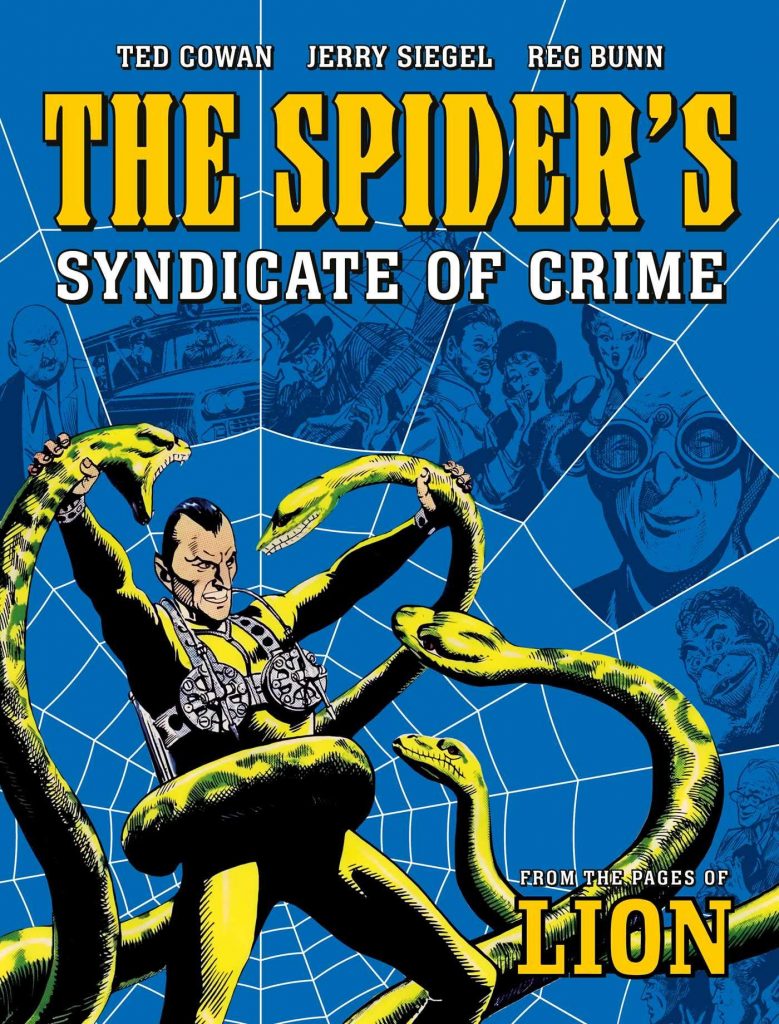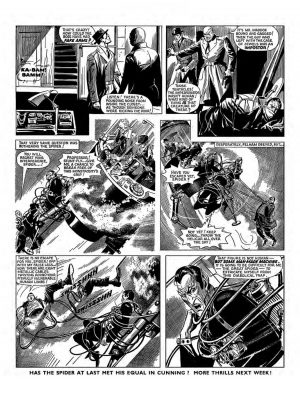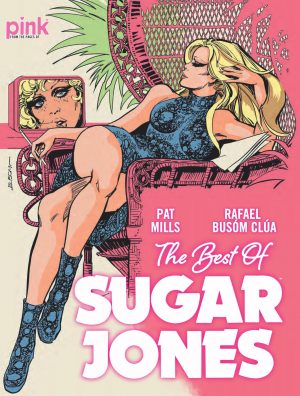Review by Frank Plowright
British comics of the 1950s to the 1980s never experienced formal censorship like the American publications of the same era, but if anything the corporate fear of angry parents imposed even stricter repression. However, a major difference was that British comics could and did feature criminals as lead characters in three and four page outings, and very occasionally they profited from their crimes as well. Ranking highest among a strong villainous bunch was the Spider, distinctively designed by artist Reg Bunn, his alien pinched face and pointed ears never explained. Co-creator Ted Cowan has him operating in what for the readers of the 1960s was the exotica of New York, and he added a touch of lunacy by the Spider’s base being a castle transported from Scotland and rebuilt stone by stone.
The first three stories here were previously collected as King of Crooks, but the difference in presentation is immense. Instead of the smudged stats shot from old copies of Lion, the delicacy of Bunn’s lines and his cross-hatching can be fully appreciated in the restored art. Bunn was an old school workhorse, never skimping on the detail, making every panel here something to be treasured. The scripts play to his strengths by featuring visually distinctive locations and characters that he ensures differ from one another. An early design triumph is the Spider’s very individual transportation, a round vertical tube large enough to carry the Spider and two henchmen with a glass covered control unit and legs enabling it to land. It features in the sample art, which displays the care and effort Bunn’s pages exemplify.
Cowan writes the first two stories, realising by the second that the Spider needs more formidable opposition than two trenchoated police detectives. He keeps them around, though, even as he introduces the illusions of Mirror Man, an equally creative master criminal believing himself the Spider’s superior. Subsequent writer Jerry Siegel – yes, creator of Superman Jerry Siegel – runs with that theme, introducing ever more fantastic foes and situations with the police more often than not caught between two determined criminal masterminds. While reader sympathies are directed toward hoping the Spider will evade all traps and remain free, to the credit of both Cowan and Siegel, what could easily be comic relief is treated with respect. Detectives Bob Gilmore and Pete Trask prove almost as creative in their methods to trap the Spider as he is in plotting his crimes.
With the art and the plots standing the test of time, it’s the dialogue that now reads poorly, very much of the explaining the plot variety, bragging and cursing, but the effort applied to the other aspects largely overcomes this. There’s little predicting how the rabbit will be pulled from the hat even now, and the better surprises outweigh the clichéd conveniences. Toward the end the editorial value of Siegel’s name is briefly exploited before the par for the times anonymity of the credits is restored in what’s still an inventive and enjoyable run.





